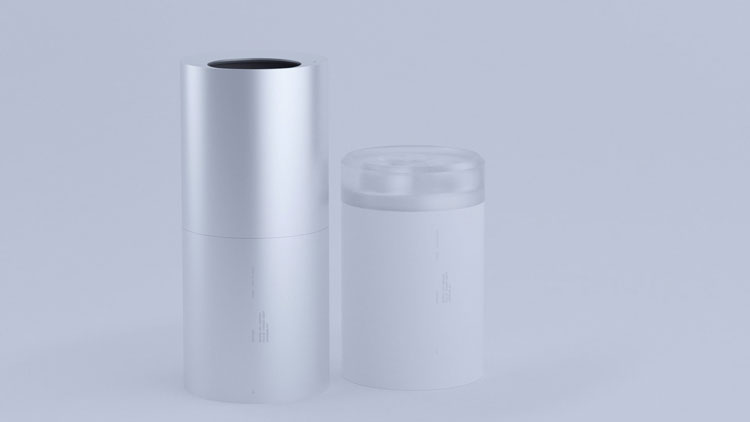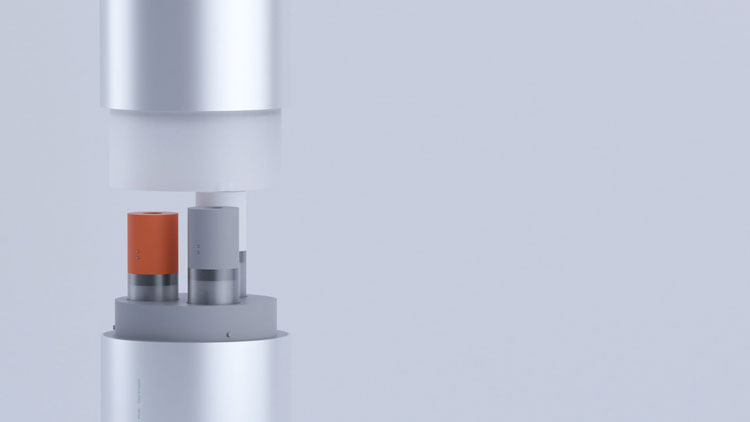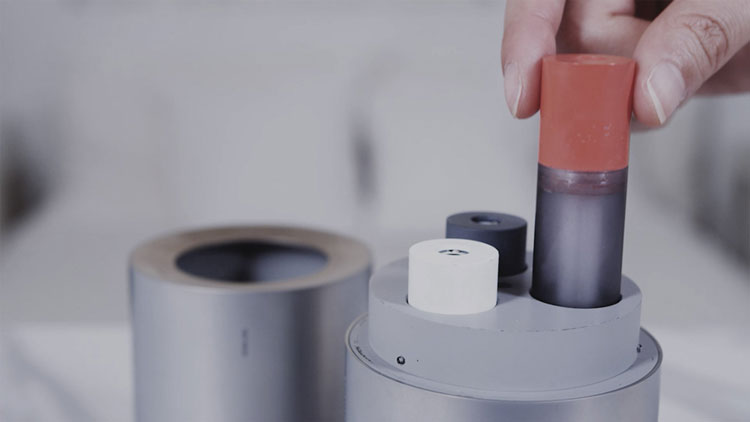Smart Diffuser Combines IoT And Aromatherapy
The Pium smart diffuser, which combines aromatherapy with the internet of things, to emit fragrances to help you wake up, wind down or concentrate at just the right time of day.
Launched by a New York-based start-up of the same name, Pium is a prototype product that has recently been successfully funded through Kickstarter and will be presented at this week’s IFA consumer electronics fair in Berlin.
The diffuser automates the experience of adding scent to a home or work environment, by building up a profile of the user’s needs through an associated app and pumping out the optimal fragrance to suit their routine throughout the day.
Pium CEO Ryan Kihm told Dezeen that Internet of Things technology (IoT) presented an opportunity to use scent more effectively than is allowed by manually operated oil burners and diffusers.
“Olfaction is a powerful sense directly connected to our mood and mind,” Pium CEO Ryan Kihm told Dezeen. “The Internet of Things is the best technology for understanding user behaviour and their context to match scents automatically.”
“We developed Pium to make olfaction a fourth dimension of the user experience along with vision, audio and haptic.”
Like Nespresso or Juicero, Pium operates on proprietary capsules. Three of these capsules – each filled with natural essential oils – can be loaded into the device at one time, and are called into action at different moments.
Pium suggested a rosemary blend for the morning, to stimulate the body into waking up feeling refreshed, and a lavender blend for night, to promote relaxation and sleep.
A peppermint blend could sharpen the mind during working hours, while a honey and cherry blossom formula might stir up romance in the evening.
The intensity of the emitted fragrance is also automated by Pium, which can draw on location data from the user’s phone to switch off the device when the user is away and switch it on when they are near.
The accompanying app gives the user the ability to control almost every aspect of the device manually, while additional integration with Amazon Echo or Google Home opens up the possibility for voice control and other features.
Pium will launch with two models initially – Brooklyn, which has a stainless-steel finish and a high-tech appearance, and the white Chelsea, which looks more like an item of homeware.
“We want Pium to be a home interior accessory rather than a tech gadget,” said Kihm. “We are already so tired of many IoT devices blinking and talking. They always want people to watch or touch them, and I believe those intentional engagements make people more tired.”
“The olfactory experience doesn’t require our focus, touch and engagement. It’s very ambient. So we want to reflect those features in Pium’s appearance.”
Pium’s Kickstarter campaign – which has already reached its $48,000 funding goal – continues for another two days. After further development, Kihm hopes to have the device ready to ship in March 2018.
The device will be presented at this week’s IFA (Internationale Funkausstellung) consumer electronics fair, which gets underway in Berlin on 1 September. It will be shown within the Samsung booth, having come out of the company’s start-up incubator, Creative Square.
The IoT is expected to feature heavily among new products at the fair. The technology sees ordinary household objects turned into networked devices that speak to each other via the internet, and has so far spawned connected kettles, smart doorbells and a toothbrush that tracks your oral hygiene habits.




Comments are closed, but trackbacks and pingbacks are open.